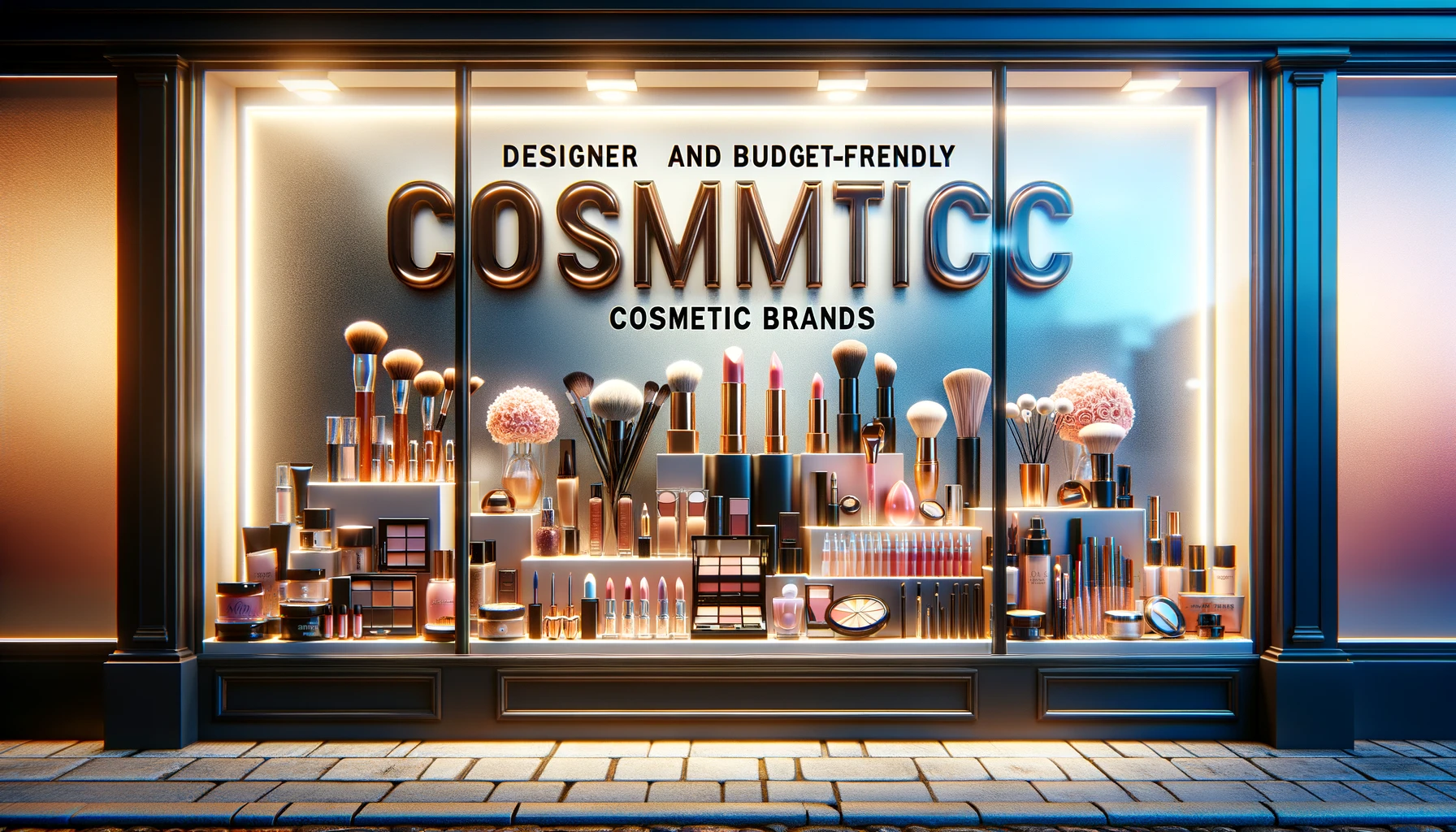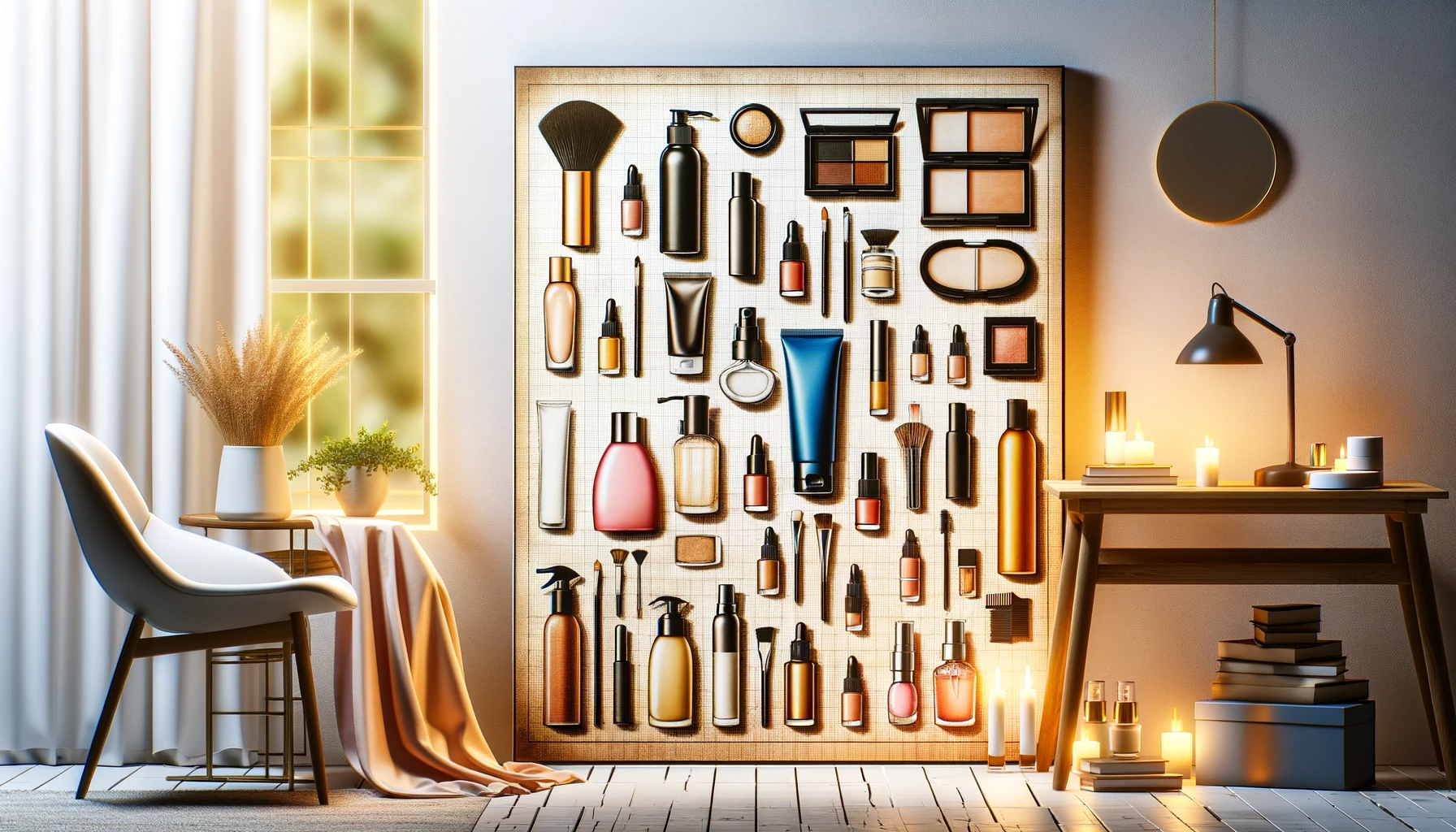
Beauty Beyond Price Tags: Finding Value in Both Designer and Budget-Friendly Brands
Discussing the perception of value in designer and budget-friendly brands
The perception of value in designer and budget-friendly brands is often closely linked to the price tag attached to a product. It is commonly believed that designer brands hold higher value due to their higher price tags, while budget-friendly brands are often seen as being of lower quality.
Many consumers equate high prices with superior quality and craftsmanship, leading them to believe that designer brands are inherently better than budget-friendly ones. However, this perception is not always accurate and can be influenced by factors such as brand reputation and marketing strategies.
While it is true that designer brands often command higher prices, they also offer unique features and qualities that contribute to their perceived value. These features include the prestige associated with owning a designer item and the social status that it symbolizes. Designer brands have established themselves as symbols of luxury and exclusivity, which adds to their value in the eyes of consumers.
In addition, designer brands often excel in craftsmanship and attention to detail. These brands invest in skilled artisans and employ meticulous manufacturing processes to create products that are not only visually appealing but also durable and long-lasting. The use of high-quality materials further enhances the value of designer products, as they are often associated with better performance and longevity.
On the other hand, budget-friendly brands are sometimes criticized for compromising on quality and durability to offer lower prices. However, this is not always the case. Technological advancements and improvements in manufacturing processes have allowed budget-friendly brands to produce high-quality products at more affordable prices. These brands can leverage economies of scale and innovative techniques to deliver products that meet consumer expectations in terms of both quality and price.
Exploring the factors contributing to the value of designer brands
Prestige and Social Status
In the world of fashion, designer brands hold a certain level of prestige and social status. Owning and wearing designer pieces is often seen as a symbol of wealth, success, and luxury. These brands are associated with an exclusive and elite lifestyle, attracting consumers who value the image and status that comes with wearing a designer item. The high price tags attached to designer brands contribute to this perception of prestige, as it creates a sense of exclusivity and limited accessibility.
Craftsmanship and Attention to Detail
One of the key factors that differentiate designer brands from budget-friendly options is the level of craftsmanship and attention to detail in their products. Designers often invest a great amount of time and expertise into creating their collections, ensuring that each item is meticulously crafted to perfection. The use of skilled artisans and a focus on quality materials result in products that are not only visually appealing but also well-constructed and durable. This level of craftsmanship elevates the perceived value of designer brands among consumers who appreciate the finer details and superior quality.
High-Quality Materials and Superior Manufacturing Processes
Designer brands are known for their use of high-quality materials, such as luxurious fabrics, premium leathers, and exquisite embellishments. The choice of these materials not only enhances the aesthetic appeal of the products but also contributes to their durability and longevity. Additionally, designer brands often employ superior manufacturing processes to ensure that their products meet the highest standards of quality. These meticulous production methods, combined with the use of high-quality materials, result in products that are built to last, further adding to their value.
Overall, the value of designer brands stems from a combination of factors such as prestige, craftsmanship, attention to detail, high-quality materials, and superior manufacturing processes. These elements contribute to the perception of superiority and exclusivity attached to designer brands, making them highly coveted among individuals who seek to indulge in luxury and sophistication.
Highlighting Misconceptions around Budget-Friendly Brands
When it comes to shopping for fashion, there is a common perception that budget-friendly brands compromise on quality and durability. However, it is important to challenge these misconceptions and examine the evolving landscape of budget-friendly brands in today’s market.
Addressing the Quality and Durability Concerns
Contrary to popular belief, many budget-friendly brands are focusing on improving the quality and durability of their products. Through advancements in technology and manufacturing processes, these brands are able to produce high-quality items that meet the expectations of consumers. For example, budget-friendly clothing brands are now using innovative fabrics and materials that offer durability and long-lasting performance.
Furthermore, budget-friendly brands are increasingly implementing strict quality control measures to ensure that their products meet the highest standards. They understand the importance of providing value to their customers and are actively working towards dispelling the notion that affordable prices equate to compromised quality.
The Impact of Fast Fashion on Budget-Friendly Brands
The rise of fast fashion has had a significant impact on the reputation of budget-friendly brands. Fast fashion brands are known for their low prices and frequent turnover of new styles, which has led to concerns about environmental sustainability and ethical practices. However, it is essential to differentiate between fast fashion and budget-friendly brands.
Many budget-friendly brands are addressing these concerns by focusing on ethical production practices, including fair wages and safe working environments for their employees. They are also adopting sustainable practices, such as using recycled materials, reducing waste, and minimizing their carbon footprint.
Technological Advancements and Affordability
One of the key factors contributing to the changing perception of budget-friendly brands is the advancement of technology. Through innovation, these brands can now produce high-quality products at lower costs, making them more accessible to a wider range of consumers.
By leveraging technology, budget-friendly brands can optimize their manufacturing processes, reduce overhead costs, and streamline their supply chains. This enables them to offer affordable prices without compromising on quality. As a result, consumers can now find budget-friendly options that not only fit their budget but also meet their expectations in terms of style, fit, and durability.
Examples of Successful Budget-Friendly Brands
There are numerous budget-friendly brands that have gained popularity and recognition for their commitment to quality and affordable fashion. Some examples include:
| Brand | Description |
|---|---|
| Everlane | An ethical fashion brand that focuses on transparency, quality materials, and fair pricing. |
| Madewell | A brand known for its effortless and timeless designs, offering affordable and sustainable clothing. |
| Uniqlo | Known for its high-quality basics and innovative fabrics, Uniqlo offers affordable and stylish options for everyday wear. |
These brands demonstrate that it is possible to find well-made, fashionable clothing without breaking the bank.
In conclusion, the misconceptions surrounding budget-friendly brands are gradually being debunked as more brands prioritize quality, ethical practices, and affordability. Consumers should not judge a brand solely based on its price tag but rather consider the value and craftsmanship behind the product. By embracing budget-friendly brands that offer both style and quality, shoppers can diversify their wardrobe and make conscious fashion choices that align with their needs and preferences.
Changing Consumer Mindset: Seeking Value and Affordability
The perception of value in fashion has undergone a significant transformation in recent years. Consumers are becoming more conscious about their spending habits and are seeking greater value for their money. This shift in mindset is driving changes in the fashion industry and redefining what it means to be stylish and fashionable.
Conscious Consumerism
Consumers are increasingly aware of the impact their purchasing decisions have on the environment and society. They are now more inclined to support brands that align with their values and prioritize ethical and sustainable practices. Sustainable fashion, which focuses on environmentally-friendly materials, fair labor practices, and responsible production, is gaining momentum among conscious consumers.
Rise of Sustainable Fashion
Sustainable fashion brands are addressing the demand for environmentally-friendly clothing while maintaining a sense of style and quality. These brands are committed to reducing waste, using organic or recycled materials, and supporting fair trade practices. By investing in sustainable fashion, consumers not only contribute to a greener future but also generate a positive impact on communities and workers in the fashion supply chain.
Embracing Individual Style
Personal style and self-expression are becoming more important than simply flaunting brand names. Consumers are placing greater emphasis on creating unique looks that reflect their personality and values. Instead of being driven by brand loyalty, consumers are now focusing on finding pieces that align with their personal style, irrespective of the label associated with them.
*Cost Per Wear: Investing in Quality*
While budget-friendly brands offer affordability, there is still a place for higher-priced designer pieces in a consumer’s wardrobe. By considering the concept of cost per wear, investing in high-quality, designer items can be justified in the long run. These pieces often exhibit superior craftsmanship, attention to detail, and the use of high-quality materials that ensure longevity. Over time, the cost per wear of such items can be significantly lower compared to cheaper, fast fashion alternatives that are more likely to wear out quickly.
Variety and Accessibility
One of the benefits of budget-friendly brands is the wider variety of styles they offer. These brands cater to diverse consumer preferences, ensuring that there is something for everyone. Additionally, budget-friendly brands often prioritize accessibility, making fashion more inclusive and allowing a broader range of consumers to access stylish and on-trend items at more affordable price points.
Balance and Expression
The key to a well-rounded wardrobe lies in embracing a mix of both designer and budget-friendly brands. By combining these two categories, consumers can achieve an individual style that expresses their unique personality while also prioritizing affordability and ethical considerations. This balanced approach allows for greater creativity and flexibility in fashion choices, ensuring a diverse and versatile wardrobe.
With a changing consumer mindset that values both affordability and personal expression, the fashion industry is evolving to accommodate these new demands. Brands that adapt to consumer preferences by offering sustainable options, a variety of styles, and a mix of price points will continue to thrive in this shifting landscape. Ultimately, the concept of value in fashion is no longer solely limited to high-priced designer brands but now extends to include ethical production, personal style, and affordability.
The Value of Designer Brands: Exclusivity, Craftsmanship, and Brand Image
Designer brands have long been associated with luxury, exclusivity, and superior quality. Their high price tags are often seen as a reflection of their value, making them desirable status symbols for many consumers. Let’s explore the factors that contribute to the value of designer brands:
Prestige and Social Status
- Designer brands carry a certain prestige and social status, signaling wealth and success.
- Owning designer products often symbolizes one’s taste, discerning eye, and ability to afford premium goods.
Craftsmanship and Attention to Detail
- Designer brands are renowned for their impeccable craftsmanship and meticulous attention to detail.
- Each piece is carefully crafted with precision and skill, resulting in products that are visually stunning and built to last.
High-Quality Materials and Manufacturing Processes
- Designer brands prioritize the use of high-quality materials, such as fine leather, luxurious fabrics, and rare metals.
- These brands invest in superior manufacturing processes to ensure that their products meet the highest standards of quality and durability.
By focusing on these key elements, designer brands create a sense of value and desirability that goes beyond the price tag. They offer an emotional and experiential value, providing consumers with a sense of luxury and exclusivity.
Marketing and brand image play a crucial role in elevating the perceived value of designer brands. Through strategic advertising, collaborations with celebrities and influencers, and carefully curated brand stories, these brands create a sense of aspiration and desire among consumers.
Some notable examples of designer brands that offer high value and come with a hefty price tag include:
Renowned Luxury Brands
| Brand | Value Proposition | Key Characteristics |
|---|---|---|
| Chanel | Timeless elegance and sophistication | Signature quilted patterns, iconic interlocking C logo, impeccable craftsmanship |
| Hermès | Exclusivity and craftsmanship | Handmade luxury goods, renowned Birkin and Kelly bags, use of rare materials |
| Louis Vuitton | Luxury travel and fashion | Iconic monogram pattern, collaboration with artists, commitment to craftsmanship |
These luxury brands have built a strong reputation for delivering exceptional quality, timeless designs, and an elevated shopping experience. They tap into the emotional aspect of owning designer products, providing a sense of pride and exclusivity to their customers.
While the price tags associated with designer brands can seem extravagant, they are often justified by the long-lasting value and the emotional connection they offer. The craftsmanship, exclusivity, and brand image all contribute to their appeal.
Showcase budget-friendly brands that offer competitive value for money
When it comes to finding great value for money, budget-friendly brands are a fantastic option. These brands prioritize quality, affordability, and ethical production practices, making them increasingly popular among consumers. Here are some notable examples of budget-friendly brands that have gained recognition:
Everlane
Everlane is one brand that has made a name for itself by offering high-quality products at affordable prices. Their commitment to transparency and ethical production practices has garnered them a loyal customer base. From classic wardrobe staples to trendy accessories, Everlane provides a wide range of stylish options for every budget.
Warby Parker
Warby Parker has revolutionized the eyewear industry by providing stylish, affordable glasses. Their direct-to-consumer model eliminates unnecessary costs, allowing them to offer high-quality, prescription glasses at reasonable prices. Not only do they offer trendy frames, but Warby Parker also has a strong social impact initiative, providing eyewear to those in need for every pair sold.
H&M Conscious Collection
H&M, a well-known fast fashion retailer, has launched their Conscious Collection, showcasing their commitment to sustainability and ethical practices. This collection offers stylish clothing made from organic, recycled, and responsibly sourced materials at affordable prices. By choosing items from their Conscious Collection, consumers can support sustainable fashion without compromising on style or breaking the bank.
ASOS
ASOS is an online fashion retailer that offers a vast selection of trendy and affordable clothing, footwear, and accessories. With a wide range of styles for men and women, ASOS caters to various tastes and budgets. They also have a dedicated outlet section where shoppers can find even greater discounts and deals.
These brands exemplify the growing trend of budget-friendly options that prioritize quality and ethical production practices. They showcase that affordability doesn’t mean compromising on style or sustainability. With their competitive value for money, these brands have gained popularity and recognition, providing consumers with a wider variety of choices and accessible fashion options.
Encouraging a Balanced Approach to Shopping: Embrace Both Designer and Budget-Friendly Brands
When it comes to building a stylish wardrobe, it’s important to remember that beauty lies not just in the brand name or the price tag, but in the thoughtful curation of pieces that reflect your unique personal style. By embracing both designer and budget-friendly brands, you can create a wardrobe that is both versatile and expressive.
The Importance of Diversification
One of the key principles in fashion is diversifying your wardrobe by incorporating a mix of designer and budget-friendly pieces. This allows you to explore a wider range of styles, textures, and silhouettes, giving you the freedom to experiment and express your individuality. By combining high-end designer items with more affordable brands, you can create a well-rounded collection that caters to different occasions and moods.
The Concept of Cost per Wear
While designer pieces often come with a higher price tag, it’s important to consider the concept of cost per wear. Investing in higher-priced designer items that are timeless in design and crafted with high-quality materials can often result in a higher return on investment. These pieces are likely to withstand the test of time, both in terms of durability and style. Therefore, when evaluating the value of designer brands, it’s essential to think about the long-term benefits and the potential to wear and enjoy them for years to come.
As fashion influencer Kristen Lam teaches us, “When you break down how often you’ll re-wear an item over its lifetime, coupled with the cost of the piece, it gives you a better understanding of its worth.”
The Versatility of Individual Style
In today’s fashion landscape, personal style has taken center stage, allowing individuals to express themselves in unique and innovative ways. It’s no longer solely about wearing a prestigious brand name, but rather about embracing your own individuality and mixing and matching pieces from various brands. By combining designer and budget-friendly items, you have the freedom to create a wardrobe that truly embodies your own personal style.
Finding Inspiration from Successful Brands
There are numerous designer brands that have successfully embraced value and affordability, offering a mix of luxury and attainability. One example is Mansur Gavriel, a brand known for its high-quality craftsmanship and minimalist designs at more accessible price points. By exploring these brands, you can find inspiration for your own wardrobe and discover that affordability doesn’t necessarily mean compromising on style or quality.
Embracing Ethical and Sustainable Fashion
As consumers become increasingly conscious about their impact on the environment and society, ethical and sustainable fashion has gained momentum. Many budget-friendly brands have started prioritizing ethical production practices, ensuring fair wages, and minimizing their carbon footprint. By supporting these brands, you can contribute to positive change while enjoying fashionable and affordable pieces. Notable examples include Everlane and Patagonia, which are renowned for their commitment to sustainability and social responsibility.
Finding the Perfect Balance
Ultimately, the key to a well-rounded and satisfying wardrobe lies in finding the perfect balance between designer and budget-friendly brands. By exploring a variety of brands and collections, you can discover unique and stylish pieces that suit your individual taste while being mindful of your budget. Remember, fashion is about self-expression, and by embracing both ends of the spectrum, you can create a truly curated wardrobe that tells your own unique story.


